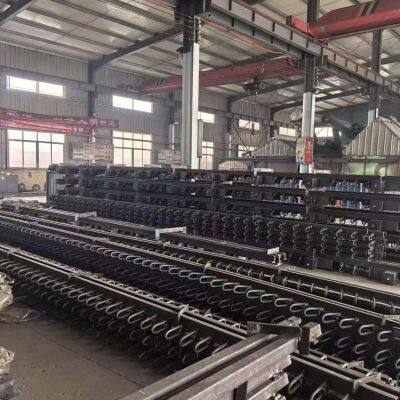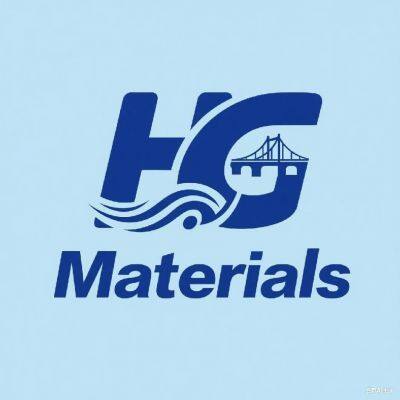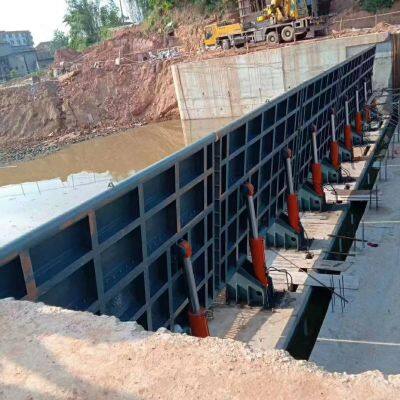Home > Products > River channel water retaining products > Eco-Friendly Hydraulic Elevator Dam Contributing to Biodiversity Protection Sediment Balance Maintenance and Water Self-Purification
Eco-Friendly Hydraulic Elevator Dam Contributing to Biodiversity Protection Sediment Balance Maintenance and Water Self-Purification
10 - 19 Square Meters
20 - 29 Square Meters
≥30 Square Meters
- Tianjin/Qingdao
- T/T L/C PayPal D/P Western Union Other
- 25 days
You May Like
-
China Hydraulic Elevator Sluice Dam for Hydroelectric Power Plants Hydraulic Elevator Dam
-
Large Size Electric Sluice Gate Valve for Drainage, Flood Control & Irrigation Water Conservancy Dam, Channel Flow Regulation
-
China OEM/ODM Hydraulic Elevator Sluice Dam for Bulk Orders Elevator Sluice Dam
-
Hydraulic Elevator Sluice Dam for Industrial Use Intelligent Gate Bic Hydraulic Lifting Dam Steel Sluice Energy-Efficient
-
Durable Inflatable Rubber Dam for Agricultural/Flood Control
-
Water Injection Boom Reusable Inflatable Rubber Flood Dam Inflatable Water Filled Tube Flood Barriers
Product Details
| Material | Carbon Steel/multi-grade hydraulic syst | Product Grade | AAA | |
| size | 2-10m | Type | Movable, up and down | |
| Dynamic system | multi-grade hydraulic system | Surface finish | marine grade 4th paint | |
| Transport Package | Wooden packaging | Specification | Manufacture according to the blueprints | |
| Trademark | HaoGu | Origin | Hengshui, Hebei, China |
Product Description
Hydraulic Elevator Dams: Practical Roles in Diverse Water Scenarios
Instead of abstract functional classifications, hydraulic elevator dams can be understood as "multi-role water managers" that adapt to different scenarios. Their ability to adjust height on demand allows them to take on targeted roles—solving real problems for cities, villages, shipping industries, and ecosystems. Below is a detailed breakdown of their practical applications through four core roles:
Role 1: Urban Water Guardian & Landscape Designer
Cities face dual challenges of flood risk and demand for livable water spaces. As an "urban water guardian," hydraulic elevator dams balance safety and aesthetics, turning chaotic river sections into controlled, pleasant environments.
1.1 Flood Defense: Pre-empting Urban Waterlogging
· Urban Pain: In cities with dense buildings and limited drainage (e.g., coastal or riverfront metropolises), heavy rains (100mm+ in 24 hours) often cause river overflow, submerging roads and subway exits. Traditional fixed dams can only hold water, not release it quickly enough.
· Guardian’s Action Plan:
· Pre-warning Adjustment: When meteorological stations forecast heavy rain, the dam’s hydraulic system starts lowering the gate at a rate of 0.5m per minute—expanding the river’s cross-section by 30–50% to accommodate incoming floodwater.
· Emergency Discharge: If rain intensity exceeds expectations and upstream water levels rise 1.2m above the warning line, the dam drops to its lowest position (usually 0.3–0.5m above the riverbed) within 5–8 minutes, ensuring floodwater flows unobstructed.
· Post-flood Recovery: After the rain stops, the dam is raised gradually (0.2m per hour) to avoid sudden water level changes that damage riverbanks. Within 24 hours, it restores the river to its normal landscape water level (1.5–2m deep).
· Urban Value: In Southeast Asian cities like Bangkok (prone to monsoon floods) and Chinese cities like Guangzhou, this role has reduced flood-related economic losses by 40–50% and cut post-flood cleanup time by half.
1.2 Landscape Shaping: Creating Livable Waterfronts
· Resident Demand: City dwellers want accessible, beautiful river spaces—not stagnant, unregulated water bodies. Fixed dams often create either too-deep (unsafe for recreation) or too-shallow (ugly, smelly) water.
· Designer’s Action Plan:
· Customized Water Depth: For residential areas, the dam is set to maintain a 0.8–1.2m water depth—safe for children to play near and ideal for waterfront walkways with benches and greenery.
· Seasonal Aesthetics: In spring, the dam is raised 0.3m higher to form a "cherry blossom reflection pool" (matching the blooming period of nearby trees); in autumn, it’s lowered slightly to expose shallow gravel banks, attracting migratory birds and adding seasonal variety.
· Noise Reduction: The slow, controlled water flow (adjusted via dam height) reduces the sound of rushing water by 20–30dB, making the waterfront a quiet space for reading or yoga.
· Resident Benefit: In European cities like Amsterdam and Vienna, such dams have turned once-neglected river sections into top 10 urban leisure spots, increasing nearby property values by 15–20%.
Role 2: Rural Livelihood Supporter & Irrigation Steward
In rural areas, water is directly linked to crop yields and daily life. As a "rural livelihood supporter," hydraulic elevator dams ensure stable water supply for farming and drinking—adapting to the unpredictable needs of agriculture.
2.1 Precision Irrigation: Matching Crop Growth Cycles
· Farmer’s Worry: Crops need different amounts of water at different stages (e.g., corn needs 2x more water during tasseling than seeding). Traditional earthen dams can only release water in fixed amounts, leading to either drought or water waste.
· Steward’s Action Plan:
· Growth-Stage Adjustment: During the seeding stage (low water need), the dam is lowered to release 50m3 of water per hectare per week; during the tasseling stage (high need), it’s raised to release 100m3 per hectare per week.
· Drought Emergency: When rainfall is 70% below average (e.g., in arid regions of northern Africa), the dam is raised to its maximum height, storing up to 10,000m3 of water per kilometer of river—enough to irrigate 50 hectares of wheat for 30 days.
· Water-Saving Design: By releasing water in small, frequent batches (instead of large, infrequent ones), the dam reduces evaporation loss by 15–25% compared to traditional irrigation systems.
· Farmer’s Gain: In India’s Punjab region and Kenya’s Rift Valley, this role has increased crop yields by 25–35% and reduced irrigation water use by 20%, helping smallholder farmers avoid debt from failed harvests.
2.2 Rural Drinking Water Backup: Securing Basic Needs
· Village Problem: Remote villages often rely on rivers for drinking water, but during dry seasons, rivers shrink to narrow streams—exposing water to pollution from livestock or pesticides.
· Supporter’s Action Plan:
· Safe Storage: The dam is raised to form a small, enclosed water reservoir (500–1,000m3) near the village. A simple filtration system (sand + activated carbon) is installed at the reservoir’s outlet, ensuring water meets drinking standards.
· Dry-Season Supply: When the river’s natural flow drops below 10m3 per day, the dam releases 2m3 per day to the village—enough for 200 households (5 people per household, 20L per person per day).
· Sanitation Support: Extra water from the dam is used to build village toilets and wash areas, reducing waterborne diseases like cholera by 60–70%.
· Village Impact: In Nepal’s Himalayan villages and Brazil’s Amazon rural areas, this role has eliminated the need for villagers to walk 5–10km to fetch clean water, freeing up time for school (for children) and income-generating work (for adults).
Role 3: Inland Shipping Enabler & Clean Energy Partner
For regions dependent on river transport and renewable energy, hydraulic elevator dams act as a "shipping enabler" and "energy partner"—solving two key challenges with one structure.
3.1 Shipping Enabler: Ensuring Year-Round Navigation
· Shipper’s Frustration: Inland rivers often have shallow shoals (1–1.5m deep) in dry seasons, making it impossible for 300+ ton cargo ships to pass. This forces shippers to use trucks—doubling transportation costs.
· Enabler’s Action Plan:
· Depth Stabilization: The dam is raised to maintain a minimum channel depth of 2.5m (suitable for 500-ton ships) in shallow sections. For example, in the Danube River’s Serbian stretch, this has extended navigable time from 8 months to 12 months.
· Lock Coordination: When paired with a small ship lock (10m wide × 50m long), the dam creates a "water step": ships enter the lock, the lock fills with water (matching the upstream level via the dam), and then exit upstream—taking only 15–20 minutes per ship (vs. 1–2 hours for traditional locks).
· Cargo Protection: During heavy rains, the dam is lowered slightly to control water flow speed (keeping it below 1.5m/s), preventing ships from swaying and damaging cargo (e.g., fragile agricultural products like fruits).
· Shipper’s Benefit: In China’s Yangtze River tributaries and Germany’s Rhine River canals, this role has cut transportation costs by 30–40% and increased annual shipping volume by 50–60% for local businesses.
3.2 Clean Energy Partner: Powering Rural Grids
· Energy Challenge: Remote areas (e.g., mountain villages or forest regions) have limited access to national grids. Diesel generators are expensive and polluting, while traditional hydropower needs a large water head (10m+), which many rivers lack.
· Partner’s Action Plan:
· Low-Head Power Generation: The dam is raised to create a 3–8m water head—enough to drive small turbines (50–500kW). For example, a 5m head can generate 100kW of power, enough for 200 households.
· Demand-Matched Output: During morning (6–9 AM) and evening (6–10 PM) peak hours (high electricity use for cooking and lighting), the dam is raised to maximum height, increasing water flow and power output by 50%. During daytime (10 AM–5 PM), it’s lowered slightly to reduce output—saving water for peak hours.
· Grid Integration: The generated power is stored in small batteries (or connected to a microgrid) to ensure stable supply, even when the river’s flow fluctuates.
· Energy Impact: In Bhutan’s mountain villages and Canada’s northern Indigenous communities, this role has replaced 80–90% of diesel generator use, cutting carbon emissions by 5–10 tons per village per year and lowering electricity costs by 40–50%.
Role 4: River Ecosystem Restorer & Water Quality Improver
Traditional dams harm ecosystems by blocking fish migration and trapping sediment. As an "ecosystem restorer," hydraulic elevator dams use their adjustability to mimic natural river behavior—protecting aquatic life while maintaining human benefits.
4.1 Fish Migration Helper: Opening Pathways for Spawning
· Ecological Threat: Migratory fish (e.g., salmon in North America, sturgeon in Europe) need to swim upstream to spawn. Fixed dams block their path, leading to population declines of 30–50% over 10 years.
· Restorer’s Action Plan:
· Spawning-Season Opening: During fish spawning months (e.g., May–June for salmon), the dam is lowered to its minimum height (0.3m above the riverbed), creating a continuous, shallow channel for fish to swim upstream.
· Fish Passage Support: For larger dams, a "gentle-slope fish ladder" (1:10 slope) is built next to the dam. The dam’s height is adjusted to match the ladder’s water level, making it easy for fish to climb—increasing migration success rates by 60–70%.
· Young Fish Protection: After spawning, the dam is raised slowly (0.1m per day) to avoid sudden water level changes that trap young fish (fry) in shallow pools.
· Ecological Gain: In the Columbia River (U.S.) and the Danube River (Austria), this role has helped salmon and sturgeon populations recover by 25–35% over 5 years—supporting local fishing industries and biodiversity.
4.2 Sediment & Water Quality Manager: Mimicking Natural Flows
· Water Quality Issue: Fixed dams trap sediment upstream, leading to downstream riverbed erosion (losing fertile soil) and stagnant upstream water (causing algae blooms and bad odors).
· Manager’s Action Plan:
· Periodic Sediment Release: Every 1–2 months, the dam is lowered fully for 2–3 days, allowing sediment-laden water to flow downstream. This replenishes downstream farmland with nutrients, increasing soil fertility by 10–15%.
· Flow Control for Algae: To prevent algae blooms, the dam is adjusted to maintain a water flow speed of 0.5–1m/s—fast enough to keep water moving (reducing algae growth) but slow enough to avoid eroding riverbanks.
· Pollutant Dilution: When heavy rain washes agricultural runoff (pesticides, fertilizers) into the river, the dam is raised slightly to release stored clean water—diluting pollutants by 30–40% and protecting downstream aquatic life.
· Water Quality Result: In China’s Taihu Lake tributaries and the U.K.’s Thames River, this role has reduced algae blooms by 50–60% and improved water clarity from 0.5m to 1.2m—making the river suitable for swimming and fishing again.
Company Profile

Hengshui Haogu Engineering Materials Co., Ltd. is located at No. 10 Longzhaiyang Road, Longxing West Street, Qinglan Township, Jing County, Hengshui City, Hebei Province. It is a company mainly engaged in the rubber and plastic products industry; the company primarily manufactures: bridge rubber bearings, rubber waterstops, rubber water stop strips, river water blocking rubber dams, hydraulic elevator dams, cast iron sluice gates, and other hydraulic and highway products.
Contact Us

- Hengshui Haogu Engineering Materials Co., Ltd.
- Contact nameWendy Chat Now
- AddressNo. 10 Longchaoyang Road, Longxing West Street, Qinglan Township, Jing County,, Hengshui, Hebei
Product Categories
New Products
-
Factory Directly Sale Inflatable Waterproof Dam Flood Dam Protection Water Stop Rubber Dam
-
High-Quality Finest Price Inflatable Air Filled Rubber Dam for Irrigation
-
HG001 High Quality Rubber Pvc Water-stop Construction Concrete Joints Waterstops Rubber Water Stop
-
HG002manufacturer specializes in producing custom-made copper-inlaid cast iron gates and cast iron round gates
-
HG003 Customized Municipal Sewer Pipe Repair Pipe Blockage Diameter 800 Rubber airbag Rubber Pipe Sealing airbag
-
HG004 Elastomeric Laminated Neoprene Rubber Bridge Bearing Pad Nature Rubber Elastomeric Bearing Pad
-
HG005 Water Filled Inflatable Seamless Rubber Dam for Hydropower Farmland irrigation, river landscape, interception of water flow
-
HG006 Hydraulic Elevator Dam Store Water Irrigate Landscape Flood Control Sluice Dam Gate
-
HG005 Integral Seamless EPDM Rubber Dam for Combined Water-Air Inflation | River Retention, Landscape, Irrigation & Hydropower
-
HG001 Factory direct supply of rubber products for construction factories and tunnels, with embedded multi-specification steel-edged waterstops
-
HG001 Factory direct sale of rubber waterstops for hydraulic construction projects 651 embedded rubber waterstops
-
HG001 Rubber waterstop with embedded steel edge for subway tunnel, water-expanding rubber waterstop manufacturer
-
HG001 Rubber waterstop strip manufacturer, waterproofing strip for tunnels and utility corridors, back-applied type 651, embedded type
-
HG002 Cast iron sluice gate, farmland irrigation and drainage gate, high-strength wear-resistant hydraulic gate, available in wholesale
-
HG002 Integrated cast iron gate, buttress-type gate water-stop gate for farmland irrigation,
-
HG002 Cast iron sluice for farmland irrigation channels, water-stopping cast iron square sluice gate, integrated hydraulic machinery equipment
-
HG005 Flood discharge and flood control gate rubber dam, spillway dam, water-filling and air-inflated rubber dam, river water-blocking dam replacement
-
HG004 Bridge rubber bearing factory wholesale bridge shock-absorbing rubber block GJZf4 PTFE plate sliding rubber bearing
-
HG004 Bridge circular PTFE plate rubber bearing, rectangular national standard grid bearing, shock-absorbing pad
-
Highway bridge rubber bearings, plate rubber bearings, GJZ rectangular bearings, expansion joint bearings available in stock
-
HG004 Bridge highway rubber bearings, circular and rectangular bridge construction PTFE rubber pad bearings, shock-absorbing pads
-
HG005 Rubber dam, rubber water dam bags for river blocking, large rubber dam, inflatable and water-filled rubber dam, rubber sluice gate
-
Seamless rubber dam, air shield dam, inflatable water gate, flood control water barrier
-
Pipeline blockage water balloon, sewer sewage pipe leak sealing rubber balloon, thickened inflatable pipeline balloon
Popular Searches
- Gate Beijing China
- Control Sluice Dam Gate
- Hydraulic Elevator Sluice
- Hydraulic Elevator Project
- Hydraulic Elevator Water
- control valve
- submersible pump
- butterfly valve
- flow meter
- control panel
- gate valve
- flow sensor
- flow switch
- iv infusion set
- medical infusion set
- needle valve
- globe valve
- pump automation
- water switch
- pump control system
- hydraulic flow control valve
- flow regulator
- balance valve
- borehole pump
- pump switch
- flow control valve
- water pump control
- intelligent pump controller
- pump pressure control
Find Similar Products By Category
- Industrial Equipment & Components > Other Equipment & Components
Product Tags:
- Please Enter your Email Address
- Please enter the content for your inquiry.
We will find the most reliable suppliers for you according to your description.
Send Now-
 Wendy
Hi there! Welcome to my shop. Let me know if you have any questions.
Wendy
Hi there! Welcome to my shop. Let me know if you have any questions.
Your message has exceeded the limit.

- Contact supplier for lowest price
- Customized Request
- Request Sample
- Request Free Catalogs
Your message has exceeded the limit.
-
Purchase Quantity
-
*Sourcing Details
Your inquiry content must be between 10 to 5000 characters.
-
*Email
Please enter Your valid email address.
-
Mobile







